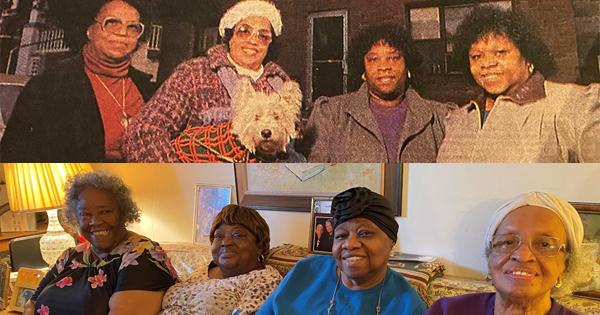
Photo Credit: Washington Post
Nationwide — Four decades have passed since they collectively purchased the unassuming six-unit building tucked away in Northwest Washington DC. Today, four of the original tenants, all African American women, still reside within its walls, and the building the purchase in 1983 for $75,000 is now worth close to $2 million.
Back when they first acquired the property, they could never have foreseen the ownership they would come to cherish. While the exterior of the building may appear unremarkable, it holds a unique place in the hearts of these women, who have weathered life’s challenges within its confines.
As the years passed, the quartet clung to their shared dream amid family illnesses, births, neighborhood transformations, and the inevitable march of time. They forged one of the city’s most enduring cooperative living arrangements, a testament to their unwavering determination. However, the time has come to part ways with their beloved home. The eldest among them, at 97 years old, and the others in their 70s, have found the stairs increasingly challenging to climb. Selling the building now presents an opportunity to reap the rewards of their decades of diligent maintenance.

According to the Washington Post, the value of their property has soared since their initial purchase, with similar buildings in the Park View neighborhood fetching over a million dollars today, and some even reaching two million. Noelle-Kristine Spencer of TTR Sotheby’s International Realty, who has been assisting the women, will soon list the property publicly. Yet, what cannot be captured in the listing are the bonds these women have nurtured within these walls.
Their story underscores the potential for housing stability and generational wealth when organizations and government agencies prioritize such initiatives. These women are more than just neighbors; they have functioned as a family, raising children together, looking out for one another’s welfare, and sharing the joys and sorrows of life. They have collectively built something remarkable, a testament to resilience and community.
Sitting in Earlie Hendricks’ apartment, where the journey began in 1971, the four women reminisce about their shared history. Joanne Jenkins joined a year later, followed by Washington in 1983, and Bettie Perry. They fondly remember the $89.50 monthly rent and the legal assistance they received to secure their property purchase. They couldn’t afford a lawyer at the time, so University Legal Services stepped in, helping them secure loans from the city to fund the purchase and subsequent renovations.

University Legal Services has since shifted its focus from property purchases to maintaining and renovating buildings acquired with city assistance. Jane Brown, the Executive Director, praises the women’s building as a success story that provided stable housing for four decades. She emphasizes that it is their prerogative to decide the best course of action now.
For these women, selling the building is bittersweet. Health concerns and the challenge of navigating the stairs have played a role in their decision. Yet, they look forward to benefiting from their years of investment. They recall the long treks to government offices and the constant maintenance as akin to a second job.
Over the years, they witnessed the neighborhood’s transformation from a place marked by open drug use and a nightly serenading stranger in the stairwell to a quieter, family-friendly community. However, the transformation has also brought a change to their lives within the building. Gone are the days of lively gatherings in Hendricks’ apartment, where her table was perpetually laden with food and friends.
As they prepare to part ways with their cherished home, Hendricks plans to move to a senior housing complex in the city, with Perry intending to accompany her, while Washington hopes to join them later. Jenkins, on the other hand, seeks a one-story house in Maryland. Their bond remains unbroken, and they anticipate new beginnings, even as they bid farewell to a place that has been their sanctuary for so long.
In the end, they are guided by the belief that this transition will lead to a happy ending, though it is a conclusion they are not quite ready to embrace.